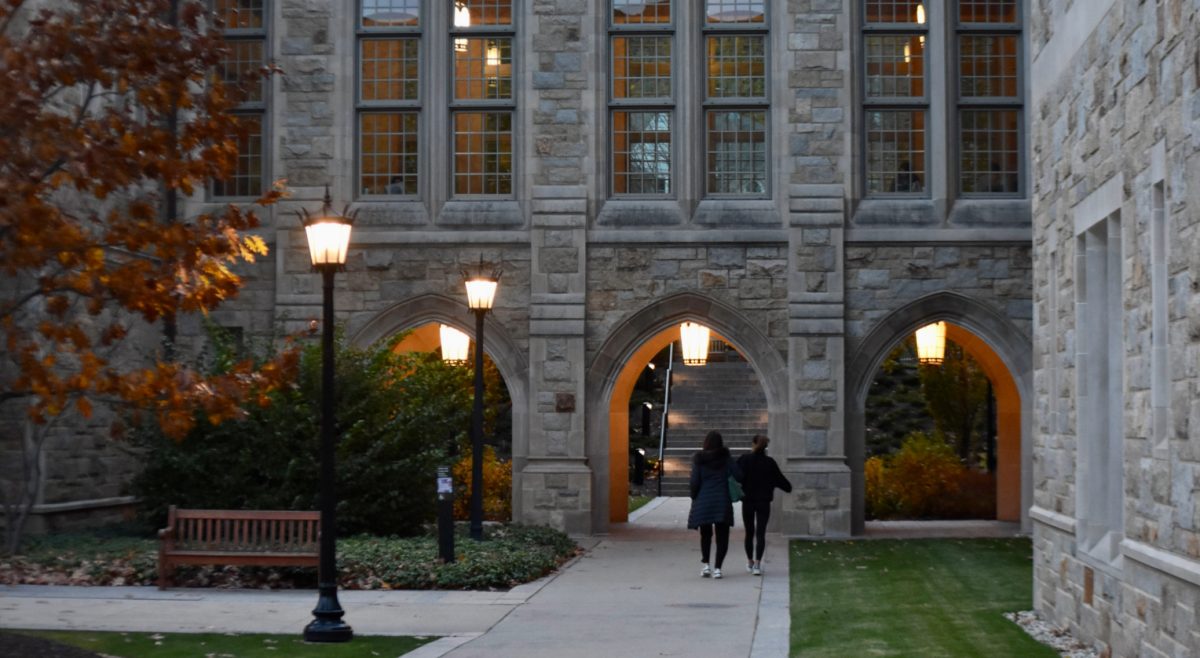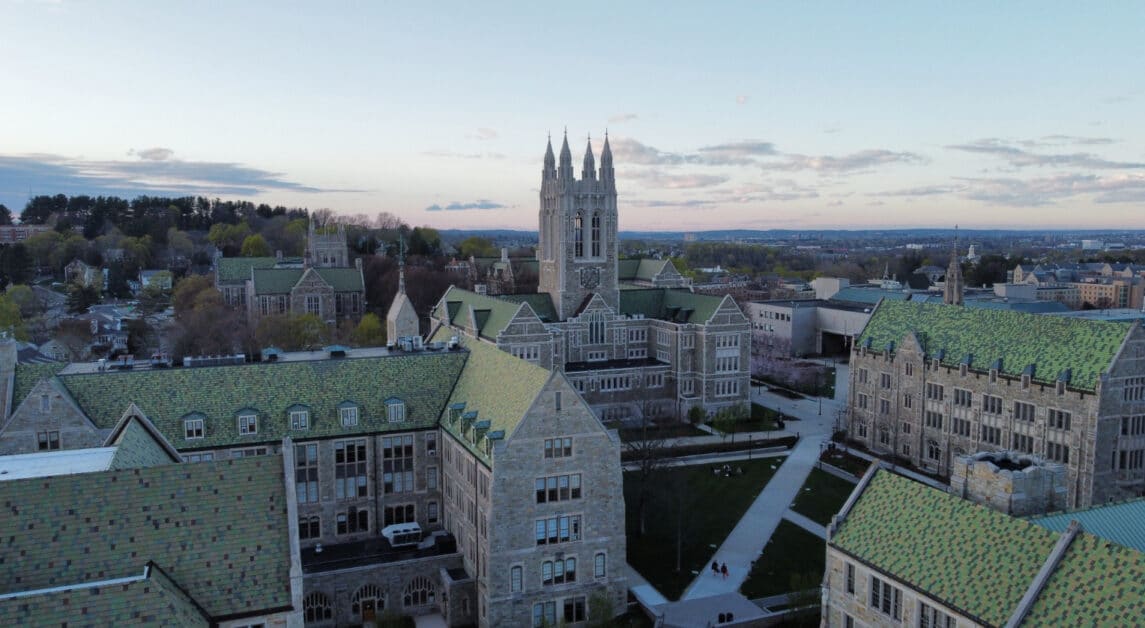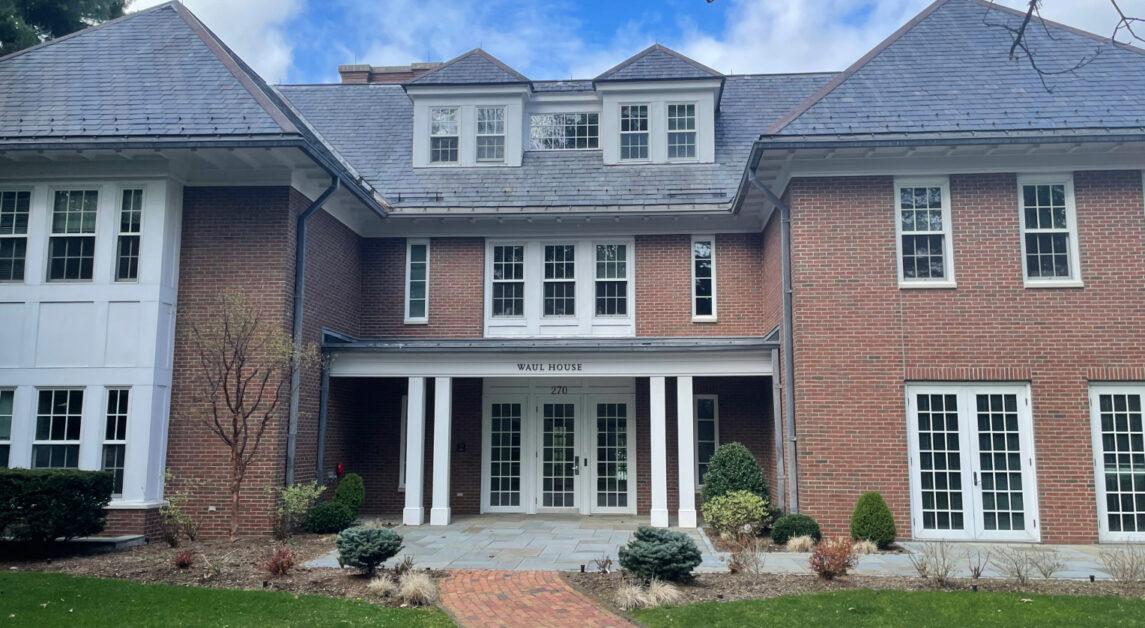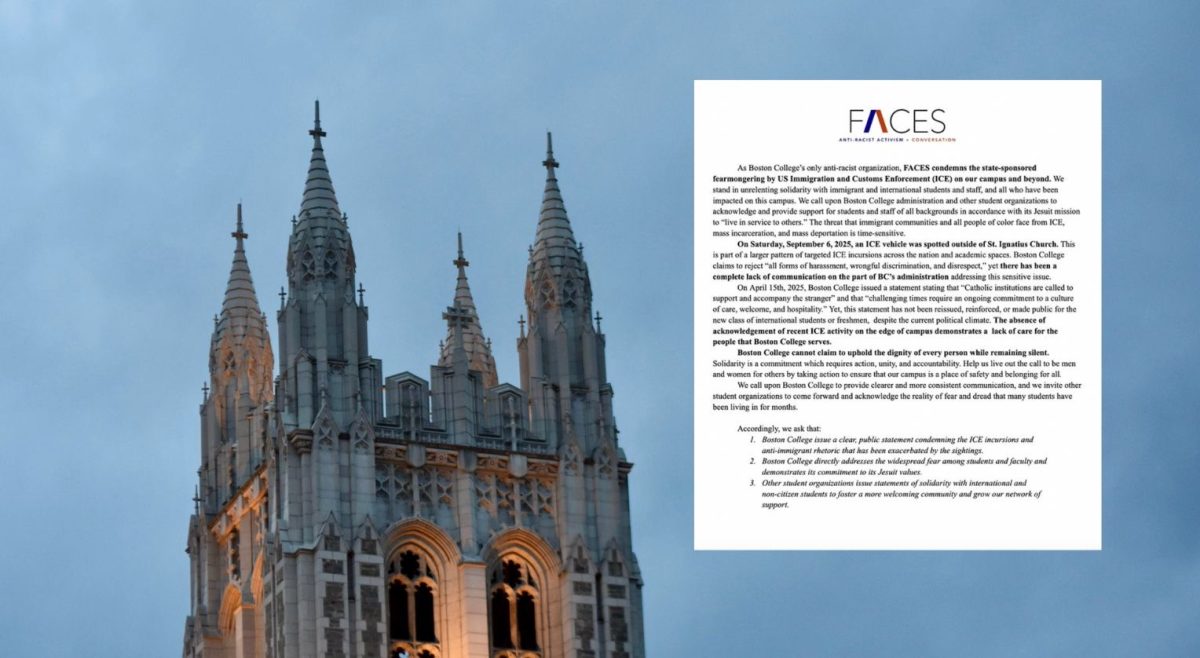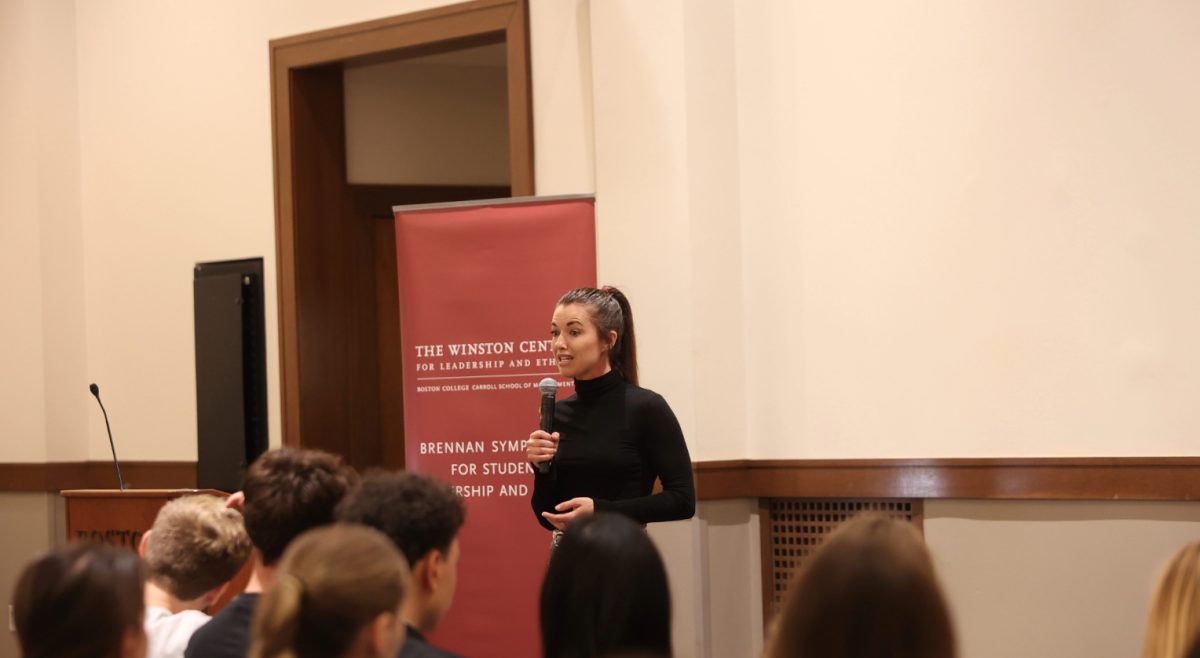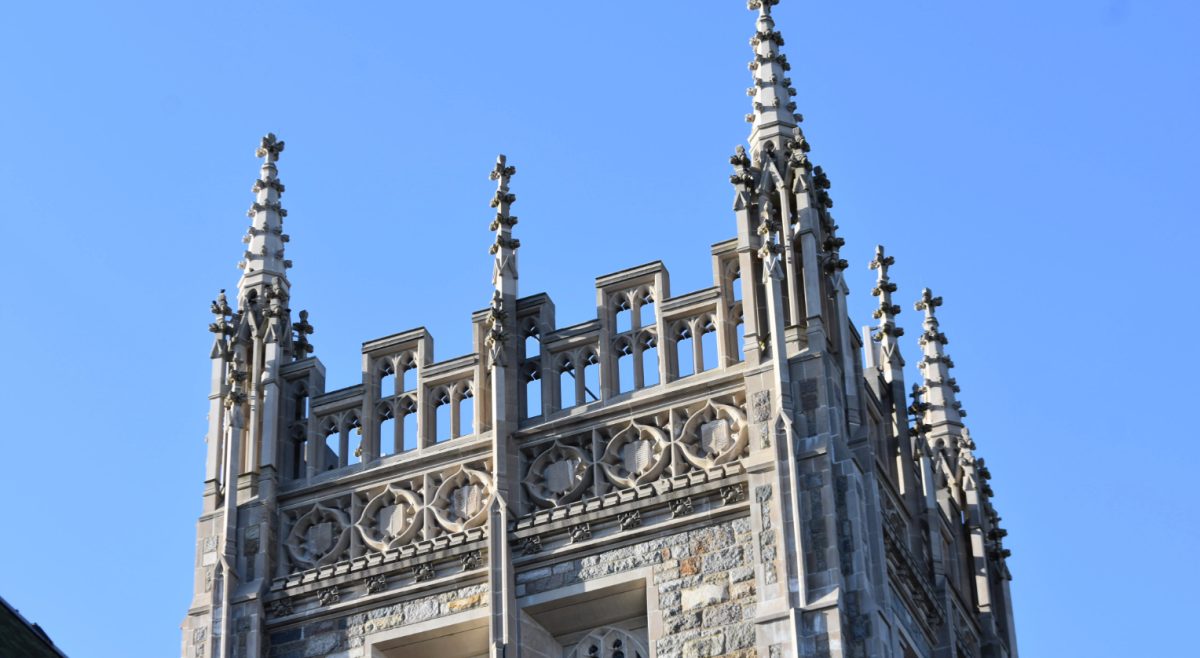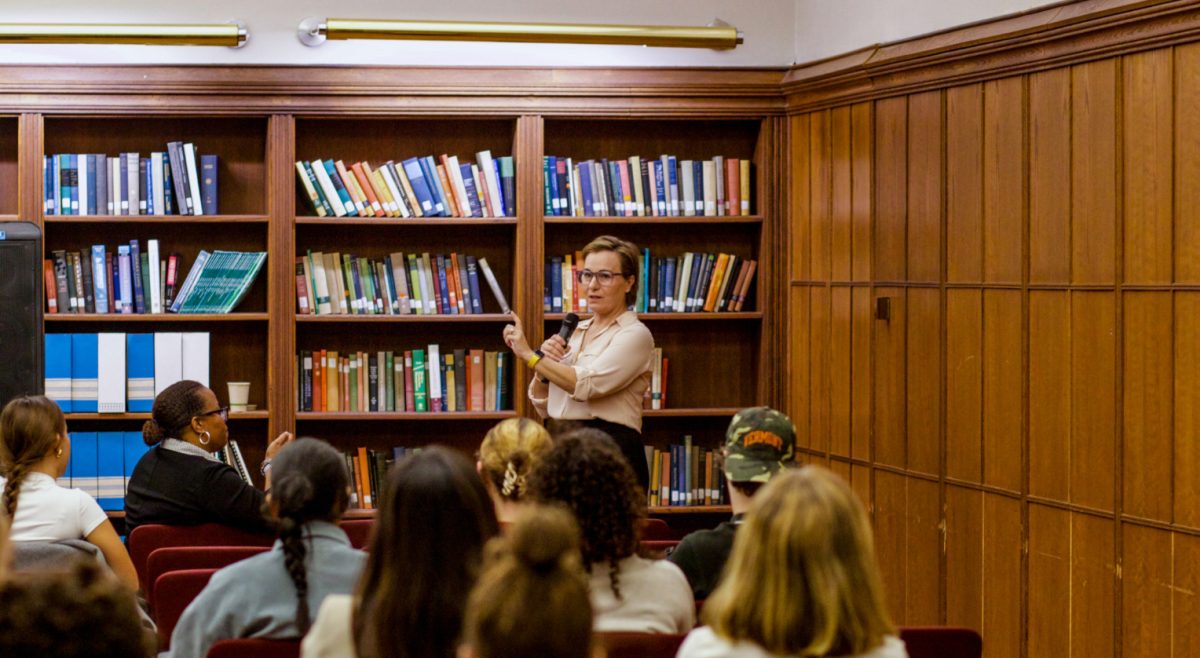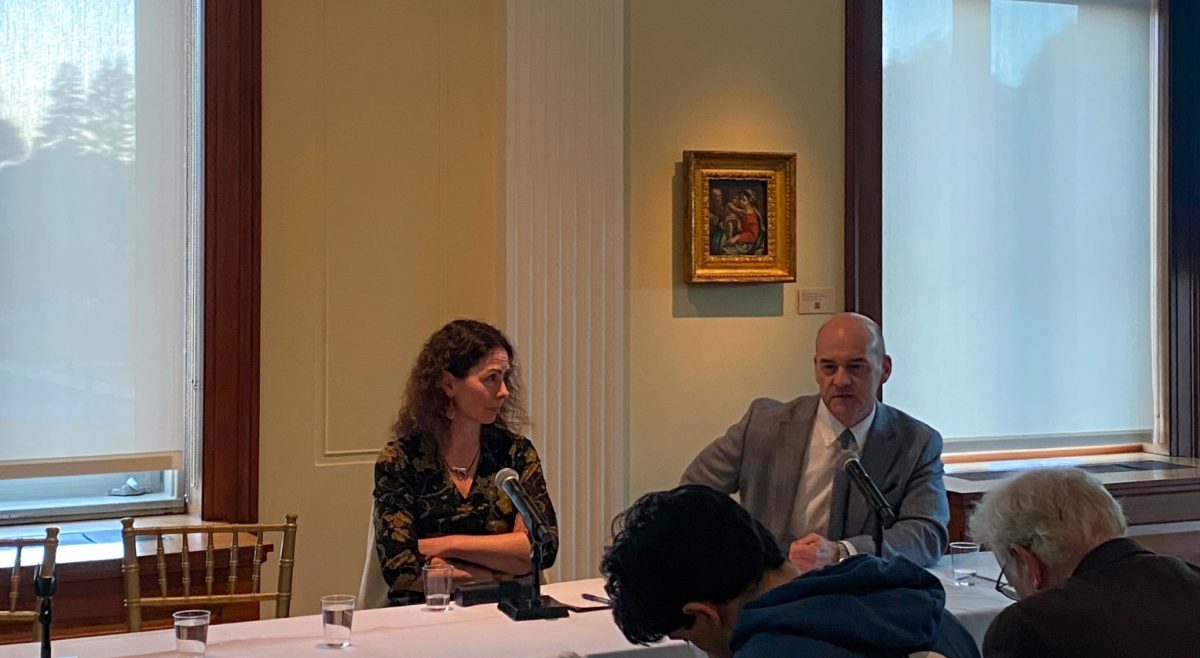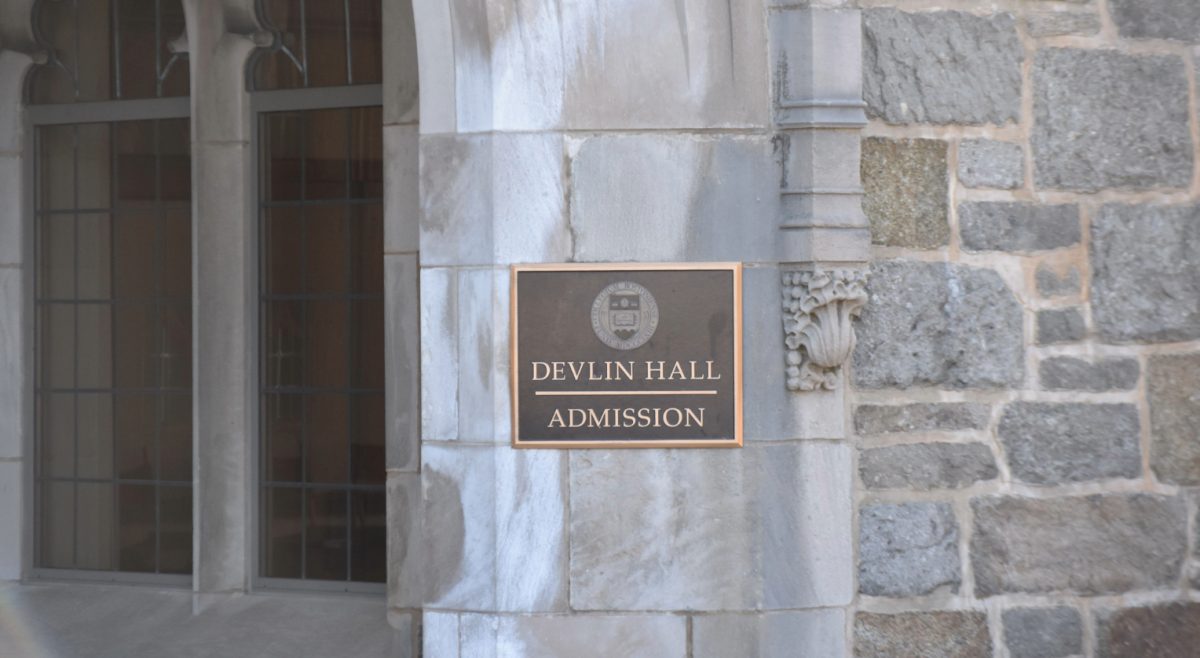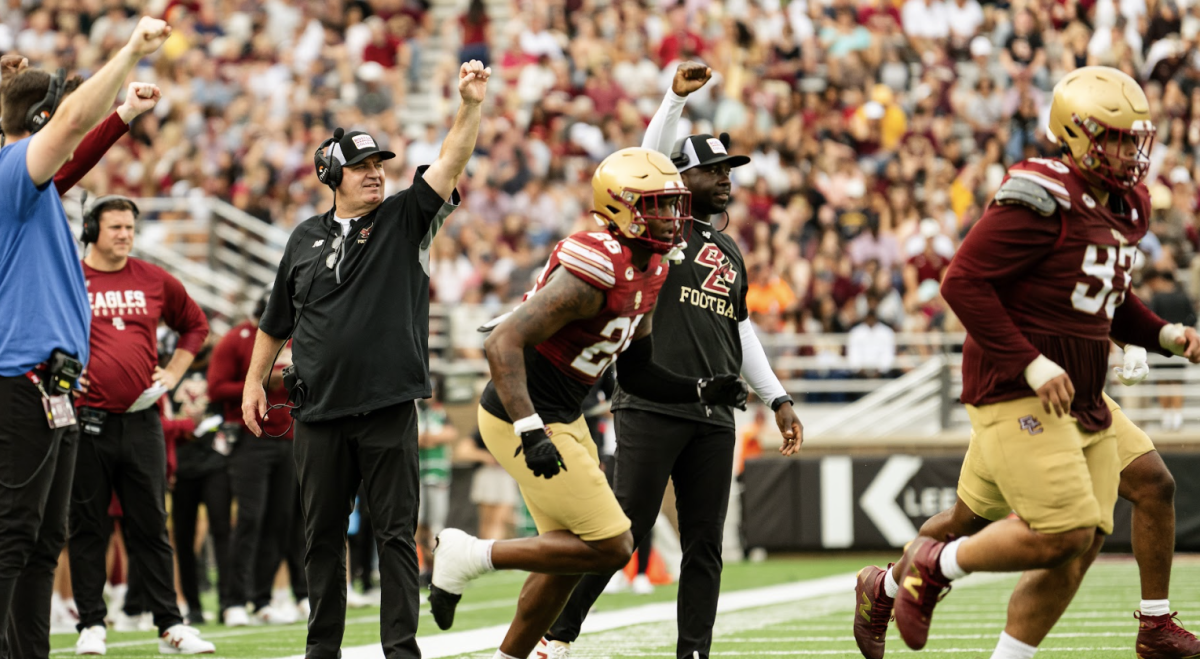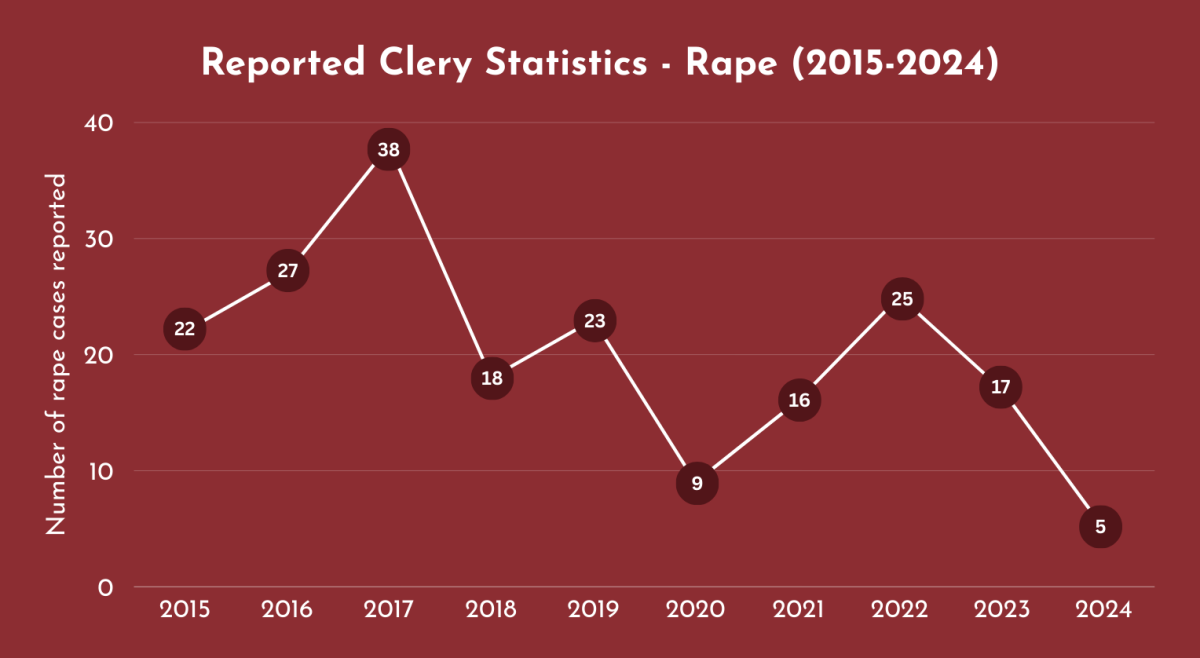A little over one month into his new position as the director of undergraduate admission at Boston College, Grant Gosselin, BC ’97, LGSOE ’02, is looking to continue the legacy of John Mahoney, who helmed that office for 28 years.
“My goal is to build on the legacy that John has set here in terms of always being seen as a reputable and ethical admissions office,” Gosselin said.
In March, Mahoney was promoted to a newly created office, the dean of undergraduate admission and financial aid. Just a few days ago, Mahoney was promoted again to vice provost of enrollment management. He’ll be tasked with fostering collaboration between the admission, financial aid, and registrar’s offices in order to better predict enrollment cycles.
“It will free up John to think more strategically on the bigger decisions that need to be made at the institution,” Gosselin said.
Gosselin will focus on running the day-to-day operations of the admissions office, and navigating annual enrollment cycles will be one of his most important tasks. To work through cycles, he’ll be taking on the challenge of predicting how many admitted students will actually decide to accept BC’s offer of admission. Over the past four cycles, the admissions yield has hovered between 26 and 28 percent.
In addition to yield, selectivity, often seen as a gauge for prestige, is an admissions statistic that gets a lot of publicity. During last year’s admissions cycle, BC had a 27 percent acceptance rate. Over the past few years, acceptance rates have been in the 28 to 32 percent range.
The easiest way to increase selectivity is to attract more applicants, and many admission offices spend considerable resources to build their pool of prospective students. BC’s admissions office is not interested in inflating application numbers, according to Gosselin. He sympathizes with the psyche of high school students in the college process and does not want BC to contribute to the proliferation of applications.
“We’re really focusing on those students that have identified BC as a good match,” Gosselin said. “It’s our goal to try to reach as many students as we can, but our goal has not been and will not be moving forward simply to boost our application numbers for the appearance of selectivity.”
Instead, he wants to focus on convincing more admitted students that BC is the right place for them—the yield is his priority.
“As you do that, you don’t need to admit as many students, and you become more selective in an appropriate way than simply appearing so through smoke and mirrors,” Gosselin said.
Gosselin sees several challenges facing the University’s desire to increase yield, one of which comes in the form of the institutions that BC competes against for students. Gosselin cited the University of Notre Dame, Georgetown University, New York University, Fordham, Villanova, Boston University, University of Virginia, Cornell, Brown, and Harvard as schools the University measures itself against. Over the past three years, Georgetown’s yield rate has increased from 47 to 49 to 51 percent. Notre Dame yielded 57 percent for its class of 2022. Harvard’s yield is typically over 80 percent.
“Some of those schools I think we fare very well against … and there are others where we have our work cut out for us to be positioned in the minds of students if they have that choice,” Gosselin said.
In addition to losing students to higher-ranked institutions, he cited the fact that BC is a high-priced institution as a challenge to recruitment. BC awards $140 million in financial aid each year, and is one of only 19 colleges and universities to meet students’ full demonstrated need and have a need-blind admissions process. Notre Dame also awards $140 million in undergraduate need-based financial aid. Harvard gave $175 million to undergraduates in 2016.
But for those that do not qualify for financial aid, the $70,000-plus cost of attendance is a hefty price tag. Some students may receive merit scholarships at other, lower-ranked institutions, and choose to go there instead.
“So I think we lose on both ends, some by prestige and some for cost,” Gosselin said. “But again, that’s where our value proposition needs to come in in terms of helping families understand what actually happens here with the student experience.”
He sees growing personnel and health care costs combined with increased investments in technology and the student experience continuing to increase higher education costs.
“You can only become so efficient in terms of the educational model, the only way to become more efficient is to hire less-qualified faculty or have larger class sizes, and those are things we are not willing to do here,” Gosselin said.
He admitted that it is a challenge to keep BC positioned as one of the most selective institutions in the country.
“Being able to sustain the success we’ve had isn’t easy when many other institutions are vying for, to overtake another institution in its position in the market and that will be something that we continue to work hard at, maintaining our position, and hopefully improving it,” Gosselin said.
The development of the Schiller Institute could help contribute to attracting more students to the University, and potentially a segment of the population that does not currently consider BC, according to Gosselin.
Under Gosselin, diversifying the student body will also remain one of admissions’ chief concerns. One component of this strategy will be to focus on continuing to build the number of AHANA+ students at BC. Over the past two cycles, AHANA+ students have made up around 30 percent of the incoming class.
“Diversity comes in all forms, and students of color and the AHANA population have always been a priority here at BC, and we’ve done really good work as an institution in increasing that and we’ll continue to focus our efforts on diversifying the student body as much as we can,” Gosselin said.
In addition, admissions will be focusing on countries that are not typically represented in the international cohort. Reflecting upon his time at BC in the ’90s, Gosselin noted that the international student population has gone from a few dozen students to almost 10 percent. Yet, he still sees room for improvement.
“We are very popular in China, Korea, and in some particular countries, and we’ll continue to focus on those areas, they are important areas for us, but really try to expand recruitment in areas where we’re perhaps not as well known,” he said.
Featured Image by University Communications




